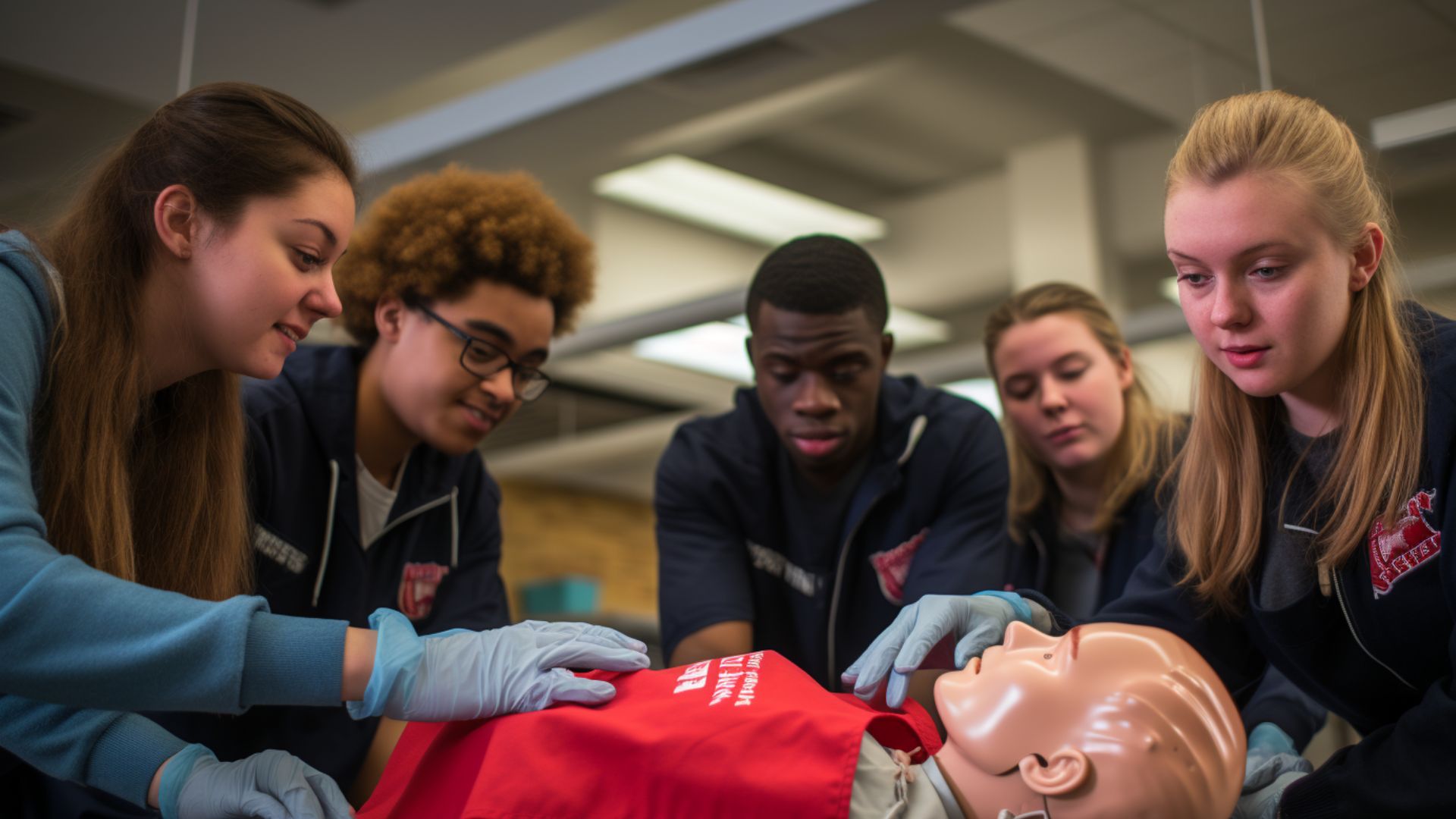
Cardiopulmonary resuscitation (CPR) and automated external defibrillators (AEDs) are life-saving techniques that can make a crucial difference in the event of a sudden cardiac arrest (SCA). While CPR and AED training has traditionally been reserved for healthcare professionals, there is a growing recognition of the importance of early education in these techniques, particularly within school environments. In this blog post, we will explore why teaching CPR and AED usage in schools is vital and how it can empower students to become confident first responders in emergency situations.
Rapid Response Saves Lives
Time is of the essence when it comes to responding to a cardiac arrest. According to the American Heart Association (AHA), the chance of survival decreases by approximately 7-10% for every minute that passes without CPR and defibrillation. By incorporating CPR and AED training into the school curriculum, we equip students with the skills needed to respond immediately in emergencies, potentially bridging the gap between the occurrence of an SCA and the arrival of professional medical help.
Creating a Culture of Preparedness
Education plays a critical role in shaping the future of society, and schools serve as hubs of knowledge dissemination. By introducing CPR and AED training in schools, we instill a culture of preparedness, where students are aware of the importance of basic life support techniques and are ready to take action when confronted with an emergency. Empowering students to act confidently and effectively in such situations saves lives and fosters a sense of responsibility and civic duty.
Building Confidence and Empathy
Learning CPR and AED usage helps students develop a range of valuable life skills. By actively participating in hands-on training, students gain confidence in their ability to handle emergency situations. This confidence extends beyond medical emergencies and spills over into other areas of life, boosting self-assurance and problem-solving skills.
Moreover, CPR and AED training also foster empathy and compassion. Students learn to empathize with individuals in distress, promoting a greater sense of community and the importance of supporting one another during times of crisis. These vital lessons shape well-rounded individuals who are equipped with practical skills and a deep understanding of human connection and the value of lending a helping hand.
Increasing Survival Rates
By introducing CPR and AED training in schools, we have the potential to significantly increase survival rates in cases of cardiac arrest. The earlier CPR is initiated, the better the chances of maintaining blood circulation and preventing permanent brain damage. AEDs, which deliver an electric shock to the heart to restore its normal rhythm, are particularly effective when administered within the first few minutes of an SCA. When students are trained to respond promptly and effectively, they become a crucial link in the chain of survival, ensuring that no precious time is wasted before professional medical assistance arrives.
Empowering the Next Generation
By providing CPR and AED training in schools, we empower the next generation to take charge of their own safety and the safety of others. This knowledge serves students throughout their lives, preparing them to respond to emergencies within the school setting and in their homes, communities, and future workplaces. CPR and AED training instills a sense of empowerment and self-reliance, shaping responsible citizens who are prepared to make a difference in the world.
Let’s Make a Difference
The inclusion of CPR and AED training in school curricula is a vital step towards equipping students with life-saving skills. Rapid response, a culture of preparedness, confidence, empathy, increased survival rates, and the empowerment of the next generation are all key reasons why early education in CPR and AED is crucial. By arming our students with these skills, we pave the way for a safer and more compassionate society.
As we strive to create a world where every individual has the opportunity to thrive, it is essential that we prioritize the education and integration of CPR and AED training in schools. By doing so, we empower our young minds to become confident first responders, ready to act swiftly and effectively in the face of emergencies. The benefits extend far beyond the school walls, impacting families, communities, and society as a whole.
Let us embrace the power of early education in CPR and AED, recognizing its potential to save lives, build resilience, and cultivate a generation of compassionate and proactive individuals. Together, we can create a future where cardiac arrest is met with a swift and capable response, turning what was once a tragic event into an opportunity for life-saving action.